Table of Contents
9
Painting
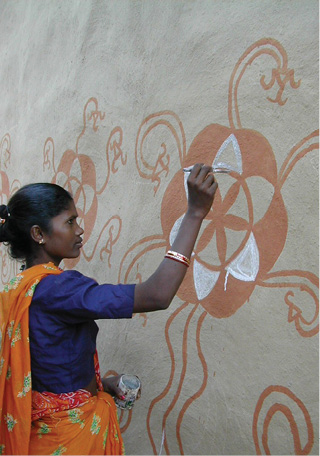
All children love to paint. Through this activity they discover the shapes and colours of the world around them. Men and women, through the ages, found satisfaction in creating multiple forms through colours and textures to tell their own special stories. The human impulse to paint is related to the need to communicate, express and make sense of the world around.
The subject of painting is, in fact, the painting. It can be the expression of a mood, a reality as seen by the artist, a graphic interpretation of a philosophical idea, an invocation of blessings from the gods, or just decoration as part of a celebration. It can be done by an individual, a group, or a community, using different grounds, colours, adhesives and tools. In India, community painting reflects the identity of a region or a particular culture and follows common characteristics.
Why Snakes?
“Why do traditional paintings, particularly in Gondi and Mithila art have so many artistic and respectful representations of snakes?”
Kalighat painting, West Bengal

This was a question asked by a German visitor at an art exhibition in Frankfurt.
“Since there are usually many snakes in the fields and in our village, we propitiated them in this manner to prevent ourselves from being bitten,” the artist from Mithila explained.

Mithila painting, Bihar
“Western society is aggressive and would think only of attacking the snake, but in a spiritual and non-violent society like India, this was a beautiful way of living with nature,” responded the German visitor.
She was so inspired, that she bought all the snake paintings at the Indian stall at the exhibition!
There is a marketing lesson to be learnt here.
What Is a Painting?
The following are the basic physical components of a painting:
♦ ground on which the painting is done
♦ colours that make up the painting
♦ adhesive or glue
♦ tools to apply colours to the ground
Mordant is a fixing agent used to fix colours on to cotton cloth during the process of printing, painting or dyeing.
Colours and images often represent meanings and concepts. Red and yellow are auspicious. The Panchavarna murals are in five colours—red, yellow, green, black, blue. A fish depicts fertility. Find out how colours from traditional paintings affect people.
Ground on Which the Painting Is Done: Right through history in India, rock faces and caves, walls of the home, the floor, the threshold, a palm leaf, a piece of wood, cloth or even the palm of a hand was used as a background to paint.
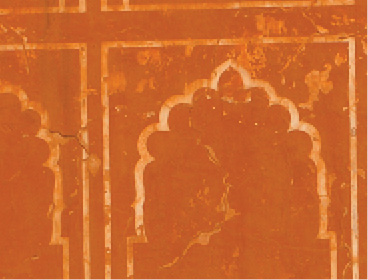
In English many terms for paintings refer to the ground. Have you heard of canvas painting, fabric painting, glass painting, wall painting also called ‘murals’, or even face painting? The ground determines what colours, adhesives, and tools should be used. Wood has an oily surface therefore water-based paints cannot be used.
In India we have many imaginative names for each type of painted surface in all our languages.
Colours That Make Up the Painting: Colours for a painting can be organic or inorganic depending on how they are obtained or made.


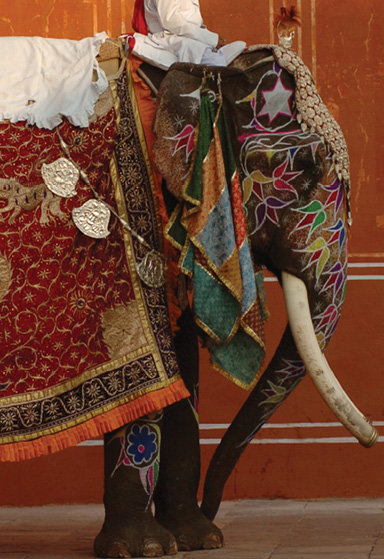
The ground for painting can be as varied as a wall (top left), the floor (extreme left), or even the body of an elephant (left).
Organic Colours: Infinite colours provided by nature from flowers, leaves, stones and even cow dung or soot collected from inside a chimney fill the artist’s palette. Common colours for cloth in use even today are:
♦ indigo laboriously obtained from the indigo plant to create many hues of blue
♦ madder red with powdered bark and leaves
♦ dried karaka flowers with powdered alum and water for an ochre yellow
These are only the basic colours whereas each region uses some special materials from its own area to add to this common natural colour range.
Before chemical colours came to be produced industrially, people sought to bring vibrancy into their lives by using colours extracted from nature. Each region had its own materials and mixtures which people used to create aesthetic moods. Also, the instinctive urge to honour nature and to capture it without destroying it inspired people to search for colours in the natural world. Traditional wisdom everywhere enabled people to experiment with available natural resources.
Dyes: Natural dyes have been used since time immemorial to add colours to cloth. It was India that first invented the technique of printing or painting on cotton cloth by using a fixing agent termed a ‘mordant’. The most common type of mordant used is myrobalam which is made from unripe karaka fruit and mixed with fresh unboiled milk. The cloth is bleached with sheep or cow dung dissolved in water before it is dyed.
Inorganic Colours: Inorganic or chemical colours such as arcylic, emulsion etc. came into existence as a result of industrialisation. They are commercially sold and since they are easily available, they are widely used.
Respect for All That Is Natural
In Mithila painting of Bihar the artists are instructed to:
♦ use only fallen leaves and flowers
♦ not use edible material
♦ never take anything from a neighbour’s garden
Adhesive or Glue: A painting is said to be permanent if an adhesive is used to fix it to the ground. For centuries, in western countries (Europe), oil was used to fix colours and the paintings were called oil paintings. When water is used it is called water colour paintings.
Adhesive or glue fixes the colour to the ground.

Resin extracted from trees is used as an adhesive agent.
Tools to Apply Colours to the Ground: Painting is done with a variety of implements or tools made from natural materials such as:
♦ thin sticks stripped from long grasses
♦ brushes made of bird’s feathers, squirrel’s and cat’s hair
♦ bamboo slivers buried in the ground until they become fibrous
Painter, Jharkhand
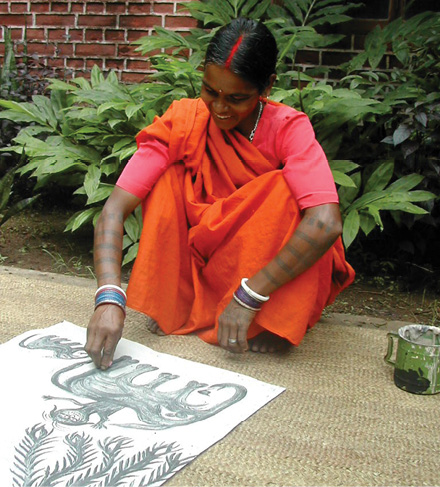
Textures are obtained by using combs, toothbrush and leaves. The effect of a spray of colour is made by blowing coloured organic liquids through a blower.
One Painting for Each Day: In India we have many impermanent forms of painting like rangoli and alpana that are created on the floor and at the entrance to the home. Coloured powders are used to colour the rangoli on the ground without an adhesive or glue as the art work is not meant to be permanent but done each day. There are special designs for festivals, to celebrate the birth of a child, or a marriage.
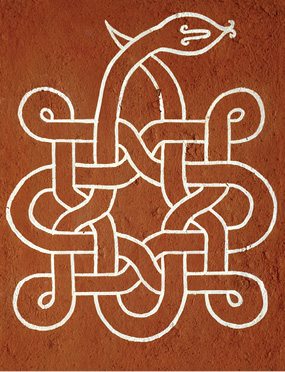
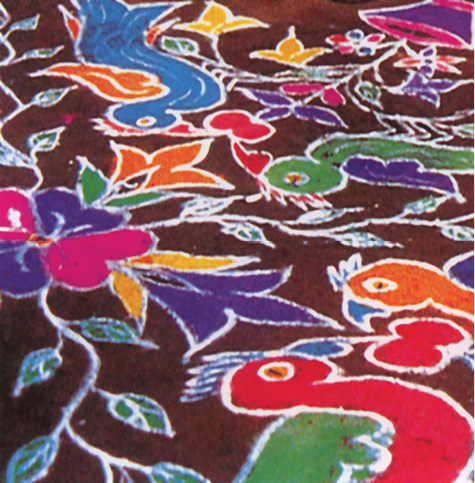
Kolam: the floor painting made by women at the entrance of their homes with white rice powder in Tamil Nadu
Did you know...
♦ Royal families engaged artists to create painted books or manuscripts to illustrate poems and stories. Great libraries of hand-written and hand-painted books were collected by rulers and kings. Often royalty had their own portraits made to adorn their palaces, and illustrate their diaries, like the Akbarnama and Jahangirnama. To paint delicate strands of hair and details of flowers in Mughal manuscript paintings, the artist used brushes with a single tail hair of a squirrel.
♦ Miniature artists in Jaipur can paint your portrait as if in a Mughal miniature setting? Can you create such a painting yourself through cut-outs, artwork or by learning from an artist?
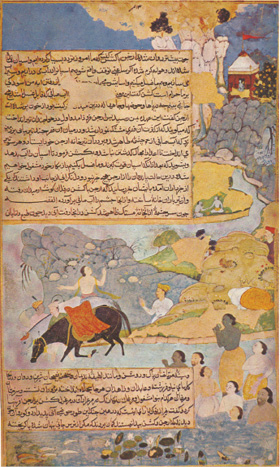
Cloth Painting
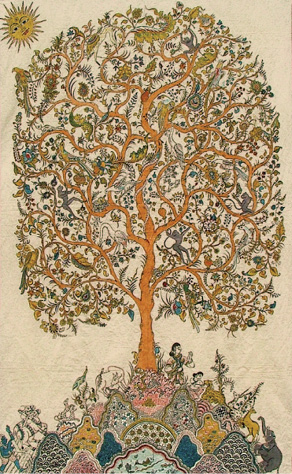
Making a Kalamkari: Kalamkari or vrathapani from Andhra Pradesh demonstrates the variety of natural materials used to create a work of art.
Kalamkari means ‘pen work’ in Persian and refers to both printed and painted cloth. In the seventeenth century Persian influences led to artists experimenting with the depiction of trees, fruits, flowers and ornamental birds.
Using a Kalam to Paint: The painting is made exclusively with a pen, the kalam made out of a bamboo sliver wound at one section with wool and then dyed with natural colours. Black ink is used to make outlines, and jaggery, rusted iron filings and water are used for making colours to fill in details.
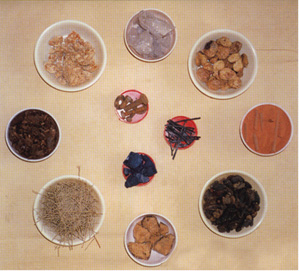
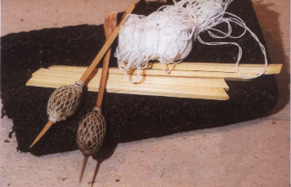
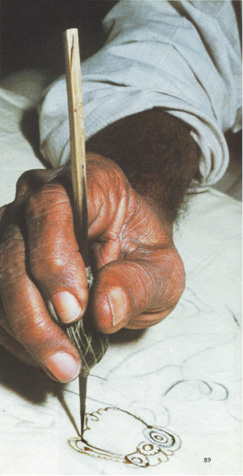
Painted Stories: The art of painting stories on cloth is located in Sri Kalahasti, a town in Andhra Pradesh. Originally large paintings on cloth served as pictorial renderings of the great epics, the Ramayana and the Mahabharata for temples. Paintings were also made to illustrate spiritual poems of eminent writers.

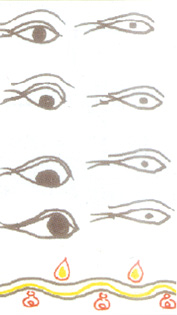
The process of painting the cloth and the fineness of the lines depends on the artistic talent of the painter. Great skill is also required in laying the colours on the cloth, careful washing of the cloth in flowing water, sprinkling water on it regularly to ensure colour fastness, and drying it suitably in the sun.
The making of a kalamkari is a strenuous process, which, if done carefully according to the prescribed methods, produces a painting in which the colours retain their brightness and vigour for centuries.
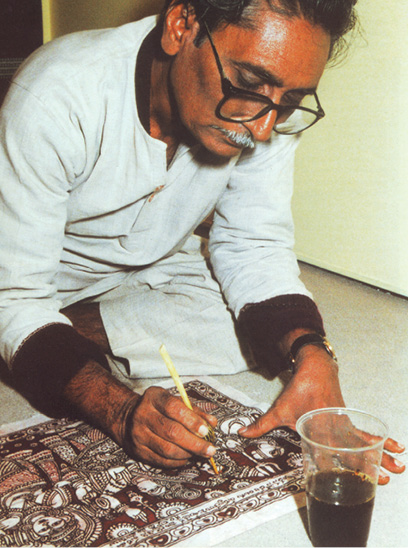
What is most interesting is that this cloth painting process involves no chemical product and the excess dyes that flow into the rivers while washing do not pollute it. A kalamkari artist once working on a painting in New Delhi preferred to return to his hometown to dye the cloth, because he felt the River Yamuna was too polluted to enable him to bring out the richness of colour that he wanted. The quality of the water, air and sunshine are all-important in the process of art-making of this nature.
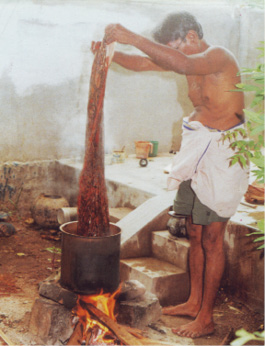
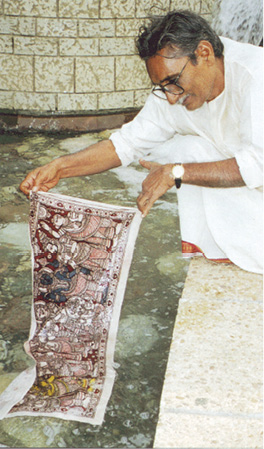
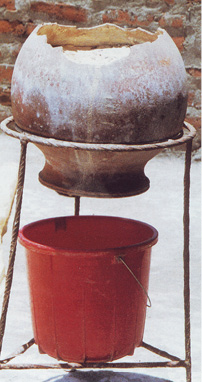

Wall Painting
The tradition of wall paintings has been passed down from pre-historic times to us today. As society moved from forest dwellings to agricultural-based communities, the art of painting continued as a part of their life and to transmit their traditional beliefs through their art.
This forms part of the universal culture of most agricultural societies. Paintings are done on walls to invoke the gods to bless the soil, keep animals healthy for work in the field, grant a family healthy progeny after marriage, and bless a newly constructed home.
Wall painting, Kerala
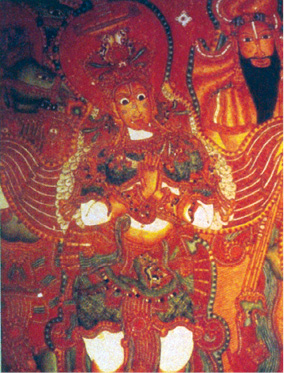
Paintings found on the walls of religious buildings depict a human quest to understand a larger universe and power.
India has the largest number of art forms, call them styles or schools, anywhere in the world, mainly because it’s cultural heritage is rich, many-layered and a vibrant, living one.
Is It New, Old or Timeless?
The aborigine art of Australia reflects the traditional way of life of the aboriginals. The people lived in difficult natural surroundings and began by using walls of caves or the barks of trees to paint. They painted their own world of sacred objects, animals, birds and images from daily life. It was both ceremonial and secular just as is Indian tribal art. Many of their paintings represent dreaming in some manner as the images have a magical and mystical quality. The style of using many coloured dots and lines to build up an image is remarkably like the art of the Gond adivasis of Madhya Pradesh.
Aborigine art, Australia
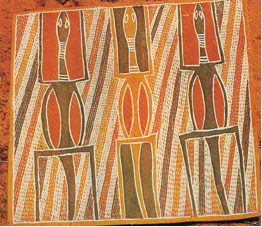
Wall Painting through the Ages
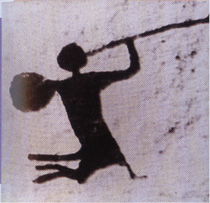

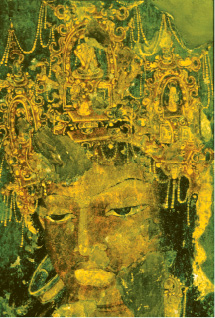
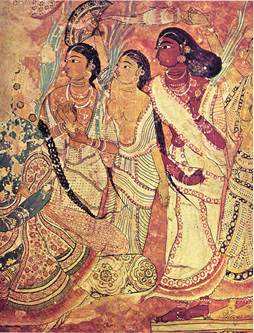

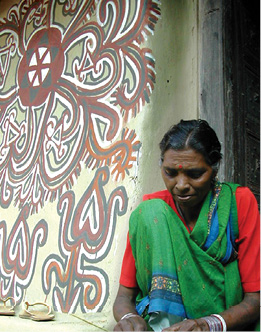

Wall Painting
In a wall painting or mural, the ground is the wall or the stone of the cave. Paint is applied on to the wall plaster. To bind the paint to the plaster the colours are often put on wet plaster so that it fuses with it.
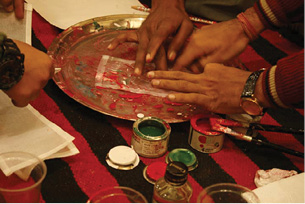
In many villages in India women apply wet lime paint to the dry mud walls. Lime is a natural disinfectant and prevents ants and termites inhabiting the walls. As they use no adhesive the paint flakes and has to be redone every season, especially after the monsoons just before Dussehra and Diwali.
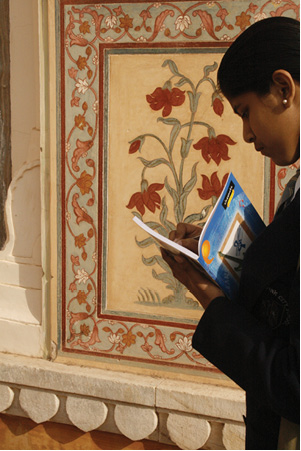
All paintings done on walls are not necessarily called mural paintings. This term is usually reserved for classical styles used for temples, churches and palaces. Sometimes these are called fresco paintings. An example of fresco painting is the mural technique revived from pre-historic cave paintings in Wynad, Kerala. It has religious and historical epics as subjects. The colours and costumes are related to the performing arts. Yellow ochre, red ochre, leaf green, lamp shoot and lime white colours are applied in layers from light to dark. These paintings do not spoil when exposed to natural elements. The internet will help you find the locations where Kerala murals can be seen.

Children studying wall painting traditions, Rajasthan
Marketing Means More than Just Selling
Indian contemporary art has attained international recognition. Earlier pioneers from the Shantiniketan school and artists like Amrita Sher Gill drew upon Indian colours and themes. The work of these artists fetches lakhs of rupees at auctions and sales in the international market.
It is worth considering why communities that practise their own traditional art forms are barely known and earn very little compared to contemporary artists.
One answer is that a single painting of an individual’s unique expression is worth more than many paintings on similar themes by many people. It is the simple law of economics that defines supply and demand.
Secondly, individual, urban art explores new themes while community art prefers to repeat traditional subject matter connected to seasons, celebrations, festivals and popular legends.
Community art was painted on walls and floors. A change in building materials and lifestyle aspirations created surfaces in homes that could not be painted upon. Here, the skill and practice of community paintings declined, and along with it the knowledge and connection with a heritage.
Community art is now adjusting to presenting itself in different ways for commercial activity. There are interesting examples of how different traditional art forms can be adapted to new surfaces and on to three-dimensional products which can be sold...
...Paintings traditionally applied to walls are now done on boxes or trays or fabrics of different kinds. Traditional folk painting has even been used to illustrate story books or make animation films.
An important aspect of appreciating the cultural heritage and art forms of different societies and communities is to learn that adaptations must not distort the art form so that its origins and meaning are lost.
An appreciation of the culture, the meanings and significance of particular motifs, and a basic respect should be the foundation for adaptability.
These are all aspects that add value to traditional art works and help in fetching better prices for its practitioners. At present the difference in commercial value between contemporary and traditional paintings is considerable. A painting done in a traditional style represents the heritage of a community and region. It gains value when the person buying it knows about its special cultural meaning and characteristics. It also helps to see the artist at work and appreciate the painstaking manner in which the work is done.
Exercises in raising awareness about such art and being able to tell the difference between pure forms and hasty attempts at ‘selling’ folk art will certainly raise its value to deserving levels.
– Jaya Jaitly, Activist for the Rights of Artists

Artist, Jharkhand
Styles of Painting

Almost every state and agricultural and tribal community of India has its distinct painting style, and some have more than one.
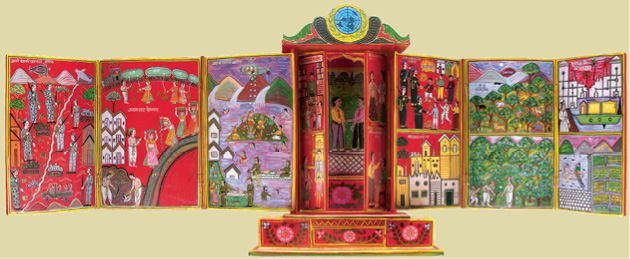
Artists in Chittorgarh, Rajasthan make wooden temples with doors that can be opened up to reveal elaborately painted stories of historical or religious importance. These woodenkavads are used for worship and on festive occasions.
Warli tribals of Thane district in Maharashtra decorate their house walls with paintings depicting their lives: planting saplings, carrying grain, dancing, travelling to market and other routine activities of their daily lives. Symbols of the sun, moon and stars along with plants, animals, insects and birds show their belief in the integration of all forms of life.
On ritual and ceremonial occasions Warli home walls are plastered with dung. Rice paste is used with red ochre powder to tell stories and to invoke the blessings of their goddess of fertility, Palaghata.
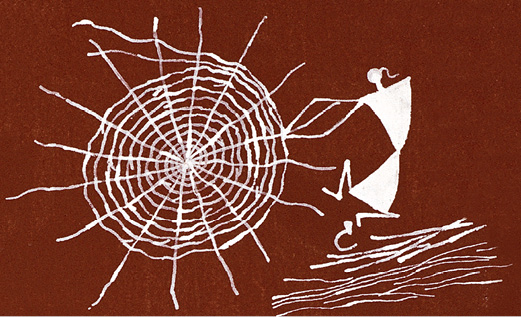

Painting on the Palms of Hands: Henna or mehndi, is used to create auspicious symbols, motifs and designs on the hands and feet on festive occasions. It is part of the creative Indian urge to paint as a form of community worship and celebration rather than an individualistic exercise of pure self-expression in which the artist then needs to market the results for survival.
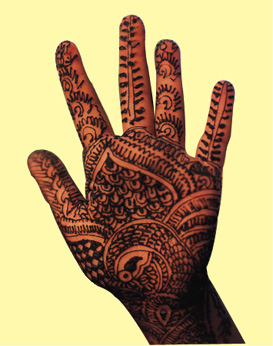
Mithila painting, popularly known as Madhubani art is from the district of the same name in Bihar and is now well-known all over the world. Women decorate the nuptial chamber and the inner walls of their homes to celebrate festivals. The return of Ram from exile and Krishna playing with gopis are the preferred subject matter. Artists often show scenes of nature, an abundant harvest, tantric images of snake worship, and even city scenes if they have visited one.
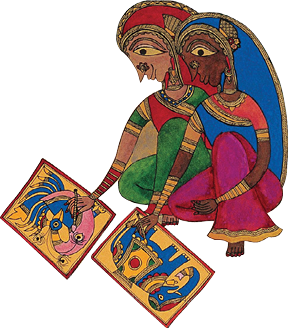
Any traditional art can be adapted to contemporary subjects. Recently the United Nations in India decided to display Indian folk paintings for the eighth Millenium Development Goals programme for which Madhubani artists Satya Narain and Moti Karn created a beautiful expression of prevention of child mortality by showing how elephants and other animals protect their young ones.
The jharnapata-chitra of West Bengal is a long vertical paper scroll used to tell stories from religious epics. The artists compose songs that they sing while they slowly unroll each scene of the painting. Old fabric is pasted on the back of the scroll to make it stronger. These village story-tellers travelled from village to village listening to news and passing on information much like television today. The Gujarat earthquake of 2001 and the tsumani of 2004 inspired such singer-artists to present ballads of these natural disasters.
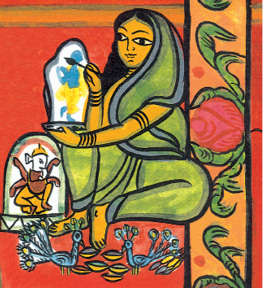
The patachitra of Orissa depicts stories from the famous poem, the Geet Govind, and devotional stanzas by ancient poets, singers and writers. The pat was earlier made as a temple offering. Stories are drawn in sections on palm leaf as etchings or as paintings on paper and silk. Deep red, ochre, black and rich blue colours from minerals, shell and organic lac are used in these paintings. Modern developments have encouraged them to paint on wooden boxes, picture frames etc. for contemporary use.
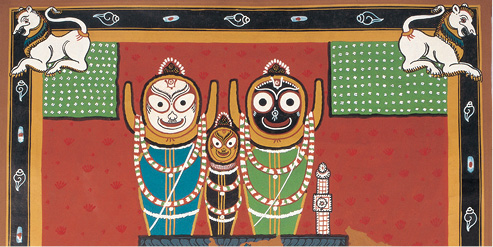
1. Choose any one type of painting (wall, miniature, book illustration) and describe its development over the centuries.
2. Search the Internet and identify two examples of wall painting from other parts of the world.
3. In the World Heritage Site of Ajanta the paintings are disappearing because the plaster on the stone walls is falling off due to water seepage and the humidity caused by the breath of thousands of visitors. How can we preserve and protect crafts objects made of cloth, stone, wood, paper, fibre and metal?
4. Marketing means more than just selling. Explain and give reasons.
5. In India we have permanent and impermanent forms of traditional painting. In a museum/art gallery what are the ways of preserving and restoring paintings? What can be done to preserve the knowledge and skills of impermanent forms of art?
6. Market forces demand that the craftsperson adapt the craft to meet contemporary needs. Find examples to show the negative and positive influences of this market requirement on the crafts, skills and on the crafts community.
7. In your region find out the traditional names given to colours, when they are used, and the social significance of these colours.
8. How would it look if traditional Indian art were used on bus stops, school buildings, railway stations or even on furniture to propagate awareness of our traditional art? Give your views on this. Suggest other methods of promoting such awareness.